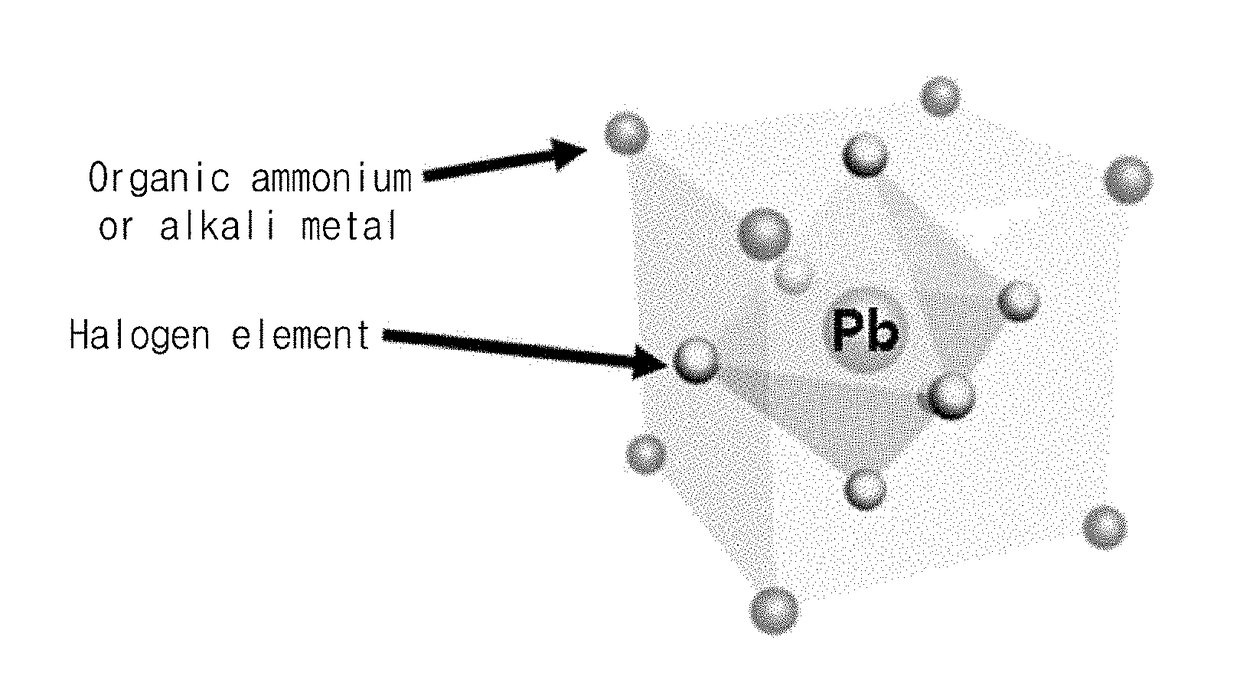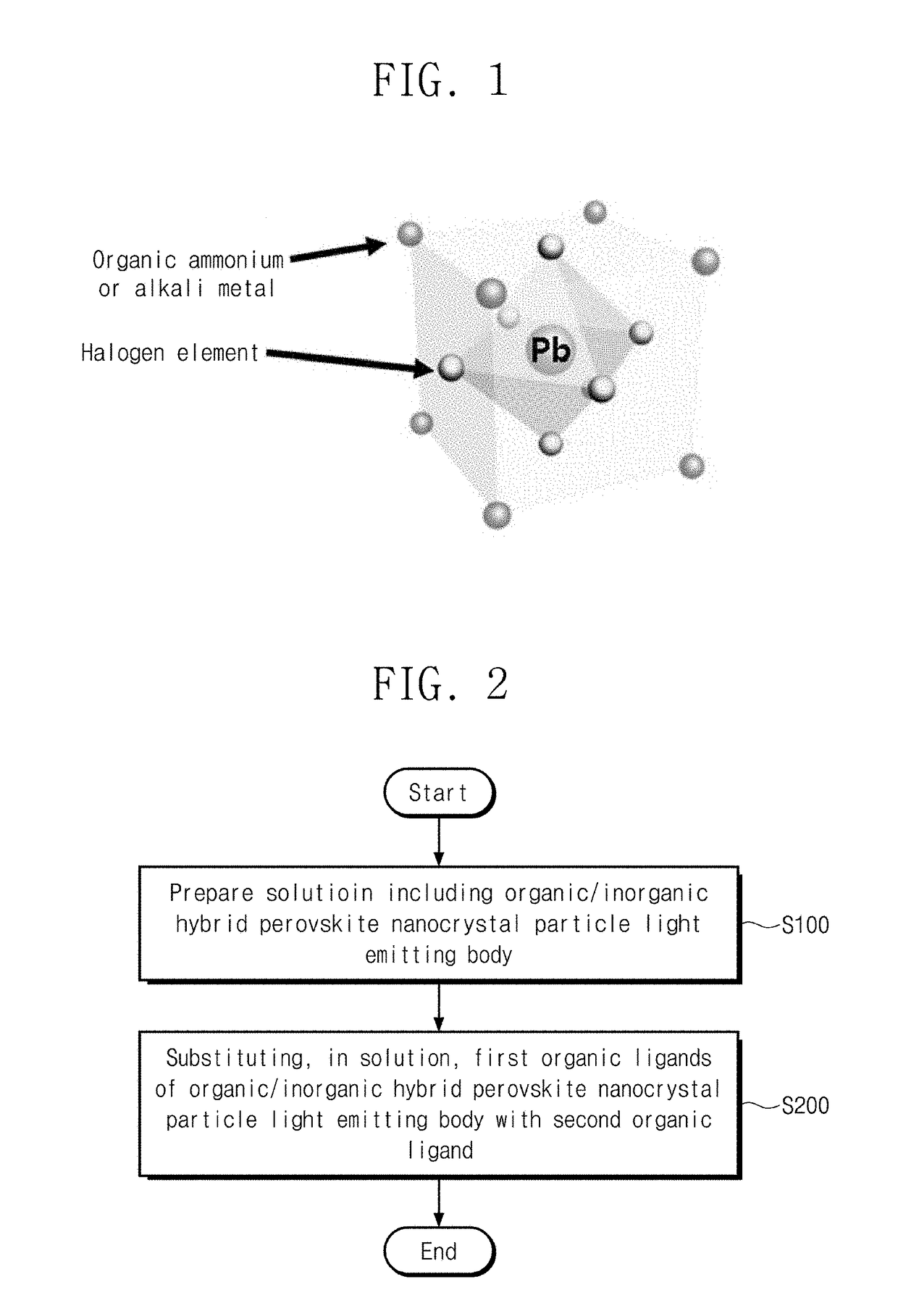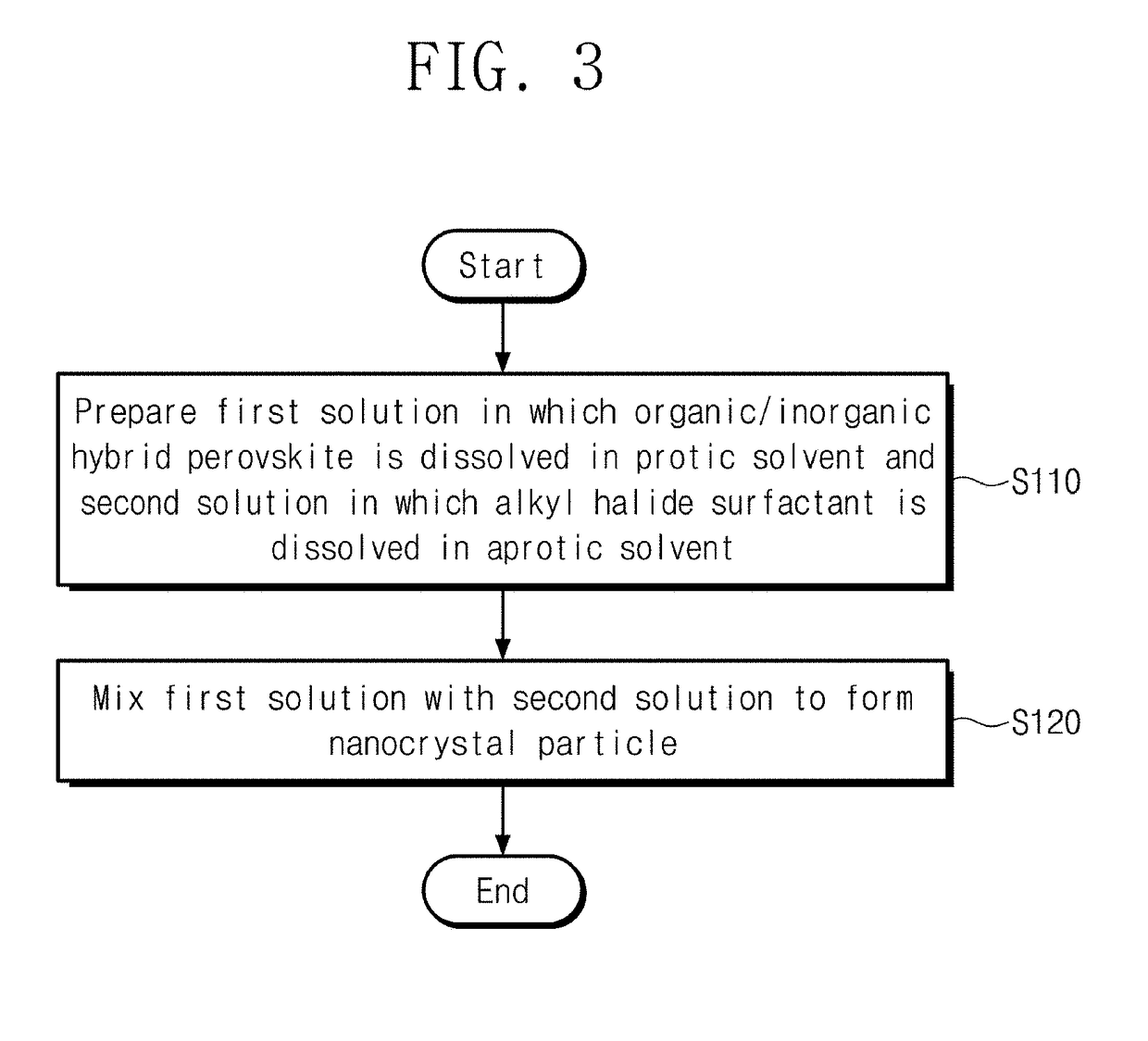Method for manufacturing perovskite nanocrystal particle light emitting body where organic ligand is substituted, nanocrystal particle light emitting body manufactured thereby, and light emitting device using same
a nanocrystal particle and light emitting body technology, applied in the direction of light-emitting devices, light-sensitive devices, electrolytic capacitors, etc., can solve the problems of difficult uniform control of the wide spectrum of existing organic light-emitters, and the inability to uniformly control the size of the quantum dots, etc., to achieve the effect of reducing the diffusion length, and improving the luminescent efficiency
- Summary
- Abstract
- Description
- Claims
- Application Information
AI Technical Summary
Benefits of technology
Problems solved by technology
Method used
Image
Examples
manufacturing example 1
[0134]An organic-inorganic-hybrid perovskite nanocrystal colloidal particle light-emitter having a 3D structure according to an embodiment of the present invention was formed. The inorganic metal halide perovskite nanocrystal colloidal particle light-emitter was formed through an inverse nano-emulsion method, or reprecipitation method, or hot injection method.
[0135]Particularly, organic-inorganic-hybrid perovskite was dissolved in a polar solvent to prepare a first solution. Here, dimethylformamide was used as the polar solvent, and CH3NH3PbBr3 was used as the organic-inorganic-hybrid perovskite. Here, the used CH3NH3PbBr3 was prepared by mixing CH3NH3Br with PbBr2 at a ratio of 1:1.
[0136]Also, a second solution in which an alkyl halide surfactant is dissolved in a non-polar solvent was prepared.
[0137]Here, toluene was used as the non-polar solvent, and octadecylammonium bromide (CH3(CH2)17NH3Br) was used as the alkyl halide surfactant.
[0138]Then, the first solution slowly dropped d...
manufacturing example 2
[0141]The same process as that according to Manufacturing Example 1 was performed, and CH3(CH2)13NH3Br was used as an alkyl halide surfactant to form an organic-inorganic-hybrid perovskite nanocrystal colloidal particle light-emitter having a 3D structure according to an embodiment of the present invention.
[0142]Here, the formed organic-inorganic-hybrid perovskite nanocrystal particle has a size of about 100 nm.
manufacturing example 3
[0143]The same process as that according to Manufacturing Example 1 was performed, and CH3(CH2)10NH3Br was used as an alkyl halide surfactant to form an organic-inorganic-hybrid perovskite nanocrystal particle light-emitter having a 3D structure according to an embodiment of the present invention.
[0144]Here, the formed organic-inorganic-hybrid perovskite nanocrystal particle has a size of about 300 nm.
PUM
| Property | Measurement | Unit |
|---|---|---|
| size | aaaaa | aaaaa |
| full width at half maximum | aaaaa | aaaaa |
| size | aaaaa | aaaaa |
Abstract
Description
Claims
Application Information
 Login to View More
Login to View More - R&D
- Intellectual Property
- Life Sciences
- Materials
- Tech Scout
- Unparalleled Data Quality
- Higher Quality Content
- 60% Fewer Hallucinations
Browse by: Latest US Patents, China's latest patents, Technical Efficacy Thesaurus, Application Domain, Technology Topic, Popular Technical Reports.
© 2025 PatSnap. All rights reserved.Legal|Privacy policy|Modern Slavery Act Transparency Statement|Sitemap|About US| Contact US: help@patsnap.com



